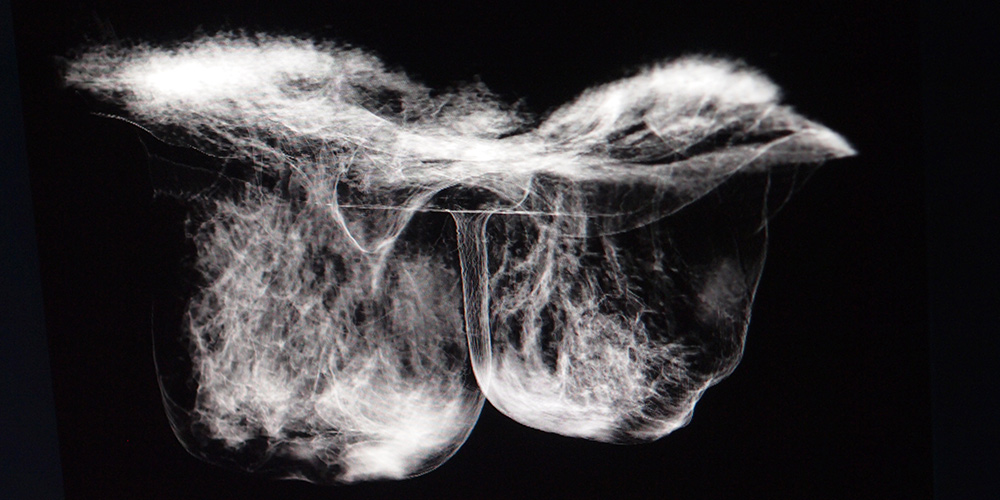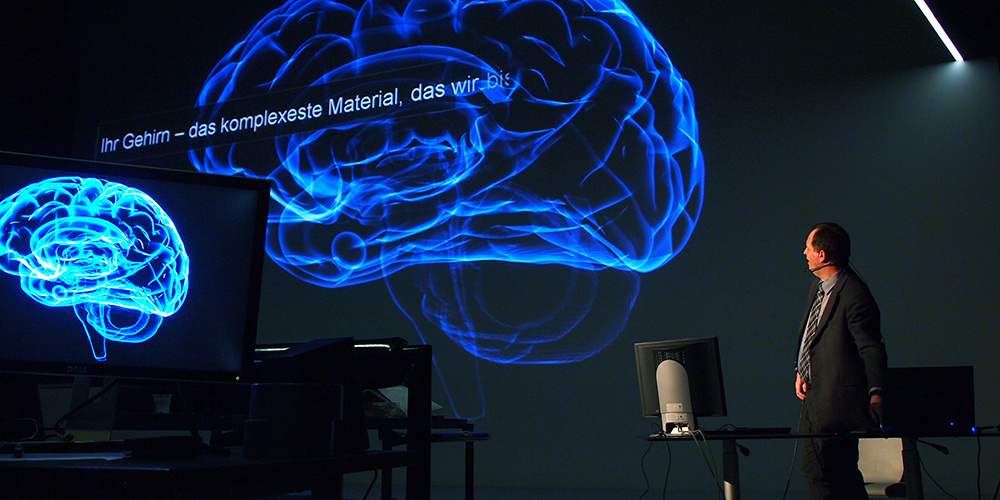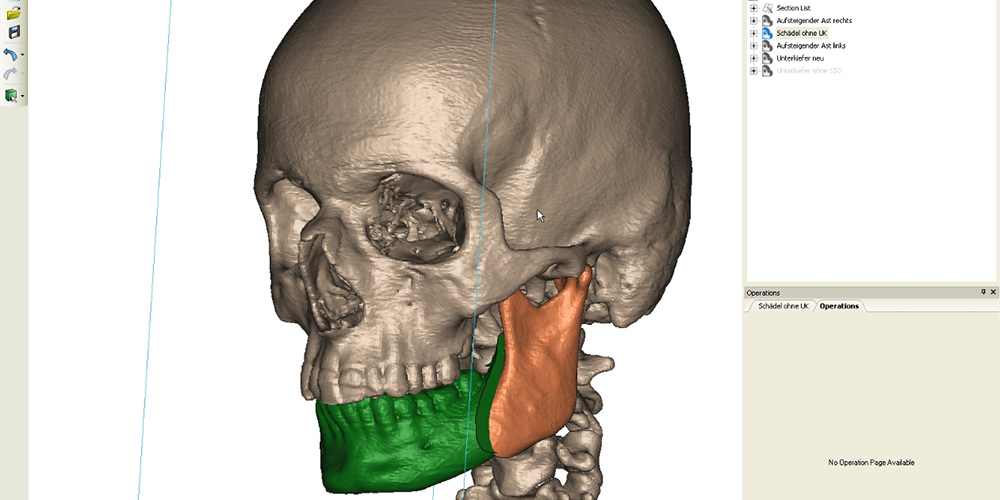
Modern imaging procedures used in the medical field today provide fascinating insights into what goes on inside a human being. Dr. Franz Fellner of Linz General Hospital recently talked to us about the possibilities created by visualizations in Deep Space, and outlined “Anatomy for All,” his upcoming series of talks in conjunction with Deep Space LIVE.
Let’s survey the imaging procedures currently used in the medical field. What technical possibilities are available to us today?
Franz Fellner: Ultrasound, CAT scans and, first and foremost, magnetic resonance imaging (MRI) provide us with unprecedented views inside the human body. Above all, the potential of MRI, which provides images without having to resort to x-rays, seems virtually unlimited. There are many insights that will be emerging in this area in the near future.
What’s on your wish-list as far as technical possibilities are concerned?
Franz Fellner: Faster and better processing of the data gathered with these methods—that the push of a button would be all it takes to obtain images that are as astounding as the ones produced at Ars Electronica.

You’re referring to the visualization procedure the Ars Electronica Futurelab has developed. In conjunction with the upcoming 19th annual international training seminar for diagnostic breast imaging and therapy in Erlangen, Germany, you’ll be holding a session live from Deep Space in the Ars Electronica Center on the subject of modern imaging techniques and their future prospects in the field of mammography.
Franz Fellner: We’ll be showcasing new techniques that will soon be coming into use in diagnosing diseases of the breast, elaborating on their possibilities and limitations. And we’ll also demonstrate what post-processing of three-dimensional cross-section data has already made feasible today.
Why is post-processing so difficult? Is it due to the tremendous quantity of data?
Franz Fellner: The large amount of data isn’t the problem anymore. The difficulties arise from the fact that there are only very minimal contrast differences among the various organs, and thus the divergences among the corresponding gray tones that result are negligible. In this area, we’re still looking for promising approaches to a solution.
So, computer art can provide support to medical science …
Franz Fellner: Definitely, and the problem of the post-processing of initially generated image data I just mentioned is a good example. I believe that, in this area, computer art can make available numerous possibilities that we need for post-processing medical imaging data. And another thing: the option of viewing these images three-dimensionally—like we do here in Deep Space—is something else we lack. This would be extremely interesting for us medical professionals, and not only for training purposes.

What makes Deep Space such an interesting setting for presentations on medical subjects—the fact that it’s not just an auditorium but a “videtorium”?
Franz Fellner: What’s extraordinary is that it’s possible to produce such large images of such high quality. In a medical image, there is often an enormous amount of highly compressed information, and one can see details much more clearly when they’re depicted in a jumbo format like this. Moreover, it’s enormously important to be able to view images three-dimensionally like we’re able to do in Deep Space.
This coming Thursday, March 6, 2014 at 8 PM, you’ll be kicking off the Ars Electronica Center’s Deep Space LIVE: Anatomy for All series with a fascinating look at the human brain. What will you focus on here?
Franz Fellner: For one thing, we’ll be looking at how the human brain has evolved. We’ll take close-up looks at particular centers of the brain such as the various areas responsible for motion and for emotions. Why do we sometimes have unnecessary fears, and we’re unable to prevent this? Or maybe we can after all! Why does this happen; what takes place in which parts of the brain? Another interesting question is: What does motion even have to do with the brain? And, conversely, why do things sometimes go awry, and what can possibly be done to prevent that? And where is the center for fun actually located in the brain? That’s a fact—fun does indeed have its own place inside our head!
And can we actually trust our brain?
Franz Fellner: In many ways, yes; in some ways, no. We’ll be going into this very topic on Thursday in Deep Space.
You’ll be hosting a total of five events in the Deep Space LIVE series. And visitors will also receive some useful advice for everyday life …
Franz Fellner: For instance, we’ll be discussing various ways for people to maintain their cerebral fitness as they get older. One is by socializing with children.

Additional sessions in the “Anatomy for All” series are set for April and June, and there’ll be two more in autumn 2014. What can we look forward to?
Franz Fellner: We’ll work our way through all the organs over the course of the year in Deep Space. First up is the cardio-vascular system; then comes the abdomen. And on each evening, a colleague of mine will briefly treat a special topic. For instance, on March 6th at 8 PM, Michael Malek, an oral & maxilo-facial surgeon at Linz General Hospital, will discuss surgical possibilities in this area. Presentations that go into great detail on each of these subjects will also be held in conjunction with Science Days on the weekend. Plus, the visitors will be able to get informed in very practical fashion using computers and models.
Don’t miss “Everything you always wanted to know about your brain,” Dr. Franz Fellner’s presentation kicking off Deep Space LIVE: Anatomy for All on Thursday, March 6th at 8 PM and Saturday, March 8th at 2 PM! Admission is €3 or a valid museum ticket. Throughout the weekend, the Ars Electronica Center will be the site of Science Days—check out three-dimensional models of jawbones that help surgeons plan their operative procedures, get acquainted with 3-D printing technology in the FabLab, and use a special workstation to experiment with functional magnetic resonance imaging (fMRI) software. A special tour entitled “Come Closer! When Technology Approaches Our Body” provides a close-up look at the “New Views of Humankind” exhibition and explains a whole array of imaging and diagnostic procedures such as microscopy, MRI and DNA analysis.
